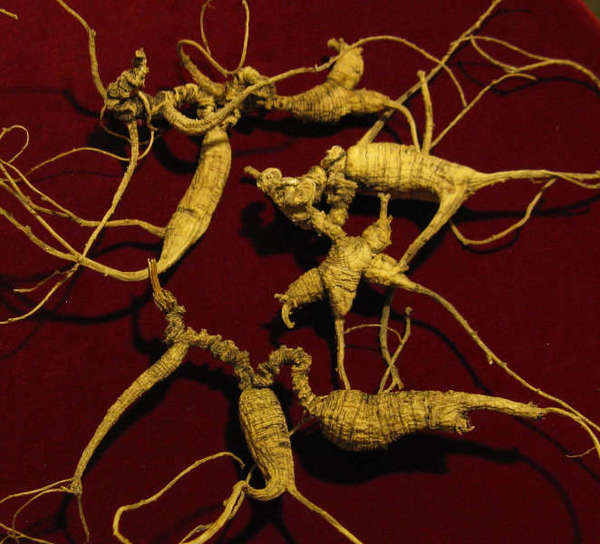Ginseng
Wikipedia: GinsengLast Updated: Feb. 28, 2012
↑About Ginseng
 American Ginseng (Panax quinquefolius) Roots, Photo © John Carl Jacobs, CC BY-SA 4.0.
American Ginseng (Panax quinquefolius) Roots, Photo © John Carl Jacobs, CC BY-SA 4.0.There are several different species of ginseng, including species native both to Asia and North America. American ginseng, Panax quinquefolius, is native to North America; it has been introduced and cultivated in China, where it is known as Huaqishen(花旗参). American ginseng is now rare and vulnerable in the U.S. due to overharvesting. Asian ginseng, Panax ginseng, is known as rénsēnshǔ (人参属) in China. A third species is often called ginseng: Siberian ginseng or Eleuthero ginseng, Eleutherococcus senticosus, is a member of the same family as ginseng but is not a true ginseng; it was named ginseng primarily as a marketing ploy, and the labelling of this plant as ginseng has been illegal in the U.S. since 2002.[1] Although Eleuthero has medicinal properties, it has not been as extensively studied as the true ginsengs, and what is known about it suggests that it has different chemical components and different health effects.[1]
Ginseng is frequently blended with teas, such as green or oolong teas. We list these teas, respectively, as ginseng green tea and ginseng oolong tea. This category is for herbal teas made exclusively of ginseng.
References:
1. Holly Phaneuf, Herbs Demystified: A Scientist Explains How the Most Common Herbal Remedies Really Work, Marlowe & Company, 2005.

